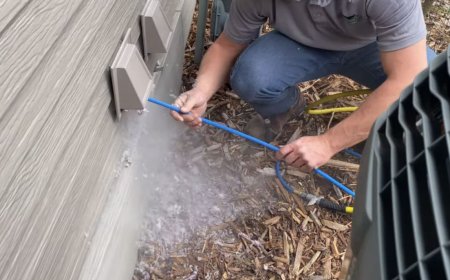Complete Guide to House Warming Ceremony Rituals and Customs
A house warming ceremony, also known as Griha Pravesh in India, is one of the most important and auspicious events in a persons life. It marks the beginning of a new chapter, symbolizing peace, prosperity, and positivity in the new home. Whether you are moving into your first home, a newly constructed property, or even a rented apartment, performing a house warming ritual helps purify the space and invites divine blessings.
In this complete guide, we will walk you through the essential rituals, customs, and traditions associated with a house warming ceremony, along with tips on planning and organizing a memorable event.
What Is a House Warming Ceremony?
A house warming ceremony, or Griha Pravesh Puja, is a traditional Hindu ritual performed before entering a new home. It is conducted to eliminate any negative energies and to seek blessings from the gods and ancestors. It is also an occasion to invite close friends and family to celebrate this joyous milestone.
Types of Griha Pravesh
There are generally three types of Griha Pravesh rituals:
-
Apoorva Griha Pravesh Performed when entering a newly constructed home for the first time.
-
Sapoorva Griha Pravesh Conducted after returning to a home that was temporarily vacated.
-
Dwandwah Griha Pravesh Done after renovations or reconstruction following damage from fire, floods, or other disasters.
Auspicious Time (Muhurat) for House Warming
Choosing the right Muhurat is crucial for a successful house warming ceremony. Consult a priest or astrologer to find the best date based on your birth chart (Janam Kundali) and Hindu calendar (Panchang). Popular months for Griha Pravesh include Magh, Phalgun, Vaishakh, and Jyeshtha, while months like Ashada, Shravan, Bhadrapada, and Ashwin are generally avoided.
Pre-Ceremony Preparations
To ensure everything goes smoothly, here are some key preparations:
-
Clean the house thoroughly and decorate it with fresh flowers, torans (door hangings), and rangoli.
-
Place a Kalash (pot) filled with water and mango leaves at the entrance.
-
Organize pooja items like rice, turmeric, kumkum, camphor, ghee lamps, coconut, and incense sticks.
-
Hire a qualified priest for conducting the rituals according to your tradition (North Indian, South Indian, etc.).
-
Send out house warming invitations to your loved ones physical cards, e-invites, or online house warming invitation maker tools can be used.
Key Rituals and Customs
Here are the essential rituals typically performed during a Griha Pravesh:
1. Ganapati Pooja
The ceremony begins with a prayer to Lord Ganesha to remove obstacles and bring good luck.
2. Kalash Sthapana
A pot filled with holy water, rice, a coin, and mango leaves is placed at the entrance. It represents abundance and purity.
3. Boiling Milk
One of the oldest customs, boiling milk until it overflows signifies prosperity and the overflowing of good fortune.
4. Havan or Homam
A fire ritual is conducted to purify the environment and bring divine blessings. Offerings like ghee, grains, and herbs are made into the sacred fire.
5. Navagraha Pooja
Worshipping the nine planets (Navagraha) helps remove planetary doshas and align cosmic energies for household peace.
6. Satyanarayan Katha
A spiritual story-telling ritual dedicated to Lord Vishnu, often performed in the evening followed by prasad distribution.
Cultural Variations
While the essence remains the same, house warming customs vary by region:
-
South India: Emphasis on Vastu Shanti and Navagraha Homam.
-
North India: Kalash Yatra and Satyanarayan Katha are popular.
-
West India: People perform Lakshmi Puja and invite neighbors for traditional feasts.
-
East India: Rituals are often aligned with local customs and family traditions.
What to Wear and Serve
Guests and hosts usually wear traditional attire. Women may choose sarees or salwar suits, and men wear kurta-pajama or dhoti. A vegetarian feast is often served post-ceremony, including sweets like laddoos, kheer, or halwa.
Return Gifts and Decoration Ideas
As a token of gratitude, consider giving small return gifts like idols, candles, diyas, or personalized mementos. Decorate the home with:
-
Fresh flower garlands
-
Diyas and string lights
-
Traditional art or wall hangings
Conclusion
A house warming ceremony is more than a religious ritualit is a celebration of new beginnings. By following the correct muhurat, rituals, and customs, you not only invite divine energy into your home but also strengthen the emotional and spiritual bond with your loved ones.
Whether you are planning a simple pooja or an elaborate event, let this guide help you honor age-old traditions while embracing the joy of a new home.































